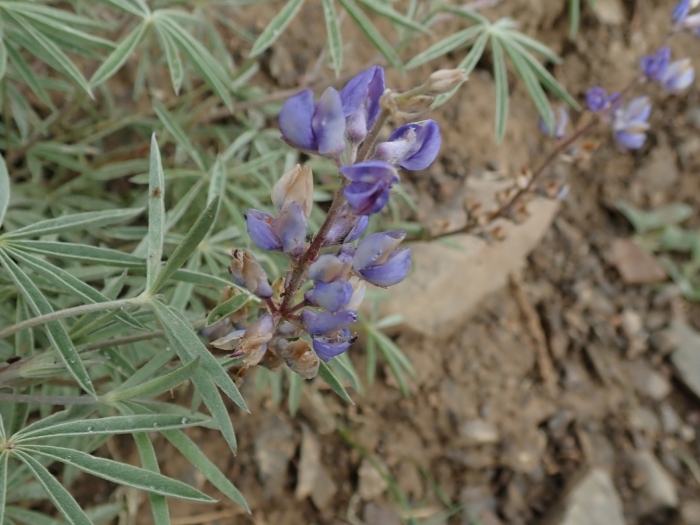Silvery Lupine
(Lupinus argenteus)
Silvery Lupine (Lupinus argenteus)
/
/

joergmlpts
CC BY 4.0
Image By:
joergmlpts
Recorded By:
Copyright:
CC BY 4.0
Copyright Notice:
Photo by: joergmlpts | License Type: CC BY 4.0 | License URL: http://creativecommons.org/licenses/by/4.0/ | Rights Holder: joergmlpts | Publisher: iNaturalist | Date Created: 2021-07-28T22:51:54Z |











































































Estimated Native Range
Summary
Lupinus argenteus, commonly known as Silvery Lupine, is a perennial herb that is native to open woodlands, meadows, and grassy slopes in the Intermountain West of North America, including the Rocky Mountains and the Great Basin. It exhibits a variable growth habit, ranging from 10 centimeters (3.9 inches) to 1.5 meters (4.9 feet) in height, with a preference for well-drained soils. The foliage may be silvery-hairy or nearly hairless, contributing to its common name. The inflorescence is a standout feature, with many flowers that can be purple, blue, or whitish, and are sometimes arranged in whorls. Each flower measures between 5 millimeters (0.20 inches) and 14 millimeters (0.55 inches) long, with the banner petal often displaying a contrasting white or yellow patch.
Silvery Lupine is valued for its ability to attract pollinators such as butterflies, birds, and hummingbirds, making it a beneficial addition to wildlife gardens and naturalized areas. It thrives in full sun and requires low amounts of water once established, making it suitable for xeriscaping. It is also used for restoration projects due to its nitrogen-fixing abilities, which improve soil fertility. While generally low-maintenance, it can be susceptible to fungal diseases in overly moist conditions. Gardeners should be aware that some lupine species can be toxic to livestock.CC BY-SA 4.0
Silvery Lupine is valued for its ability to attract pollinators such as butterflies, birds, and hummingbirds, making it a beneficial addition to wildlife gardens and naturalized areas. It thrives in full sun and requires low amounts of water once established, making it suitable for xeriscaping. It is also used for restoration projects due to its nitrogen-fixing abilities, which improve soil fertility. While generally low-maintenance, it can be susceptible to fungal diseases in overly moist conditions. Gardeners should be aware that some lupine species can be toxic to livestock.CC BY-SA 4.0
Plant Description
- Plant Type: Herb
- Height: 1-3 feet
- Width: 0.333-1 feet
- Growth Rate: Rapid
- Flower Color: Blue, Purple
- Flowering Season: Summer, Fall
- Leaf Retention: Deciduous
Growth Requirements
- Sun: Full Sun
- Water: Medium, High
- Drainage: Fast, Medium
Common Uses
Bee Garden, Bird Garden, Butterfly Garden, Deer Resistant, Drought Tolerant, Fire Resistant, Fragrant, Groundcover, Hummingbird Garden, Low Maintenance, Rabbit Resistant, Showy Flowers
Natural Habitat
Native to open woodlands, meadows, and grassy slopes in the Intermountain West of North America
Other Names
Common Names: Silver Lupine , Silver-Stemmed Lupine , Lupin Argenté
Scientific Names: Lupinus argenteus , Lupinus holosericeus , Lupinus argentus , Lupinus holosericeus var. holosericeus
GBIF Accepted Name: Lupinus argenteus Pursh